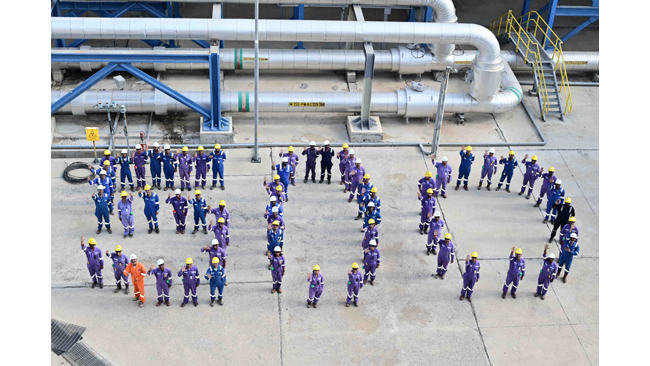
New
Delhi, October 2022.
Cairn
Oil & Gas, India’s largest private oil and gas exploration and production
company, has touched milestone 500 mmbbl production of oil from its Mangala oilfield.
Discovered in 2004 and put into production in 2009, Mangala is part of the MBA
(Mangala Bhagyam Aishwarya) trinity situated in the Barmer district of
Rajasthan. Mangala is India’s largest onshore oilfield and, during its
discovery, was considered the largest onshore hydrocarbon find in India in thepreceding
two decades.
Speaking
of the milestone, Prachur Sah, Deputy CEO, Cairn Oil & Gas, said, “We
are happy to have achieved this milestone of producing 500 mmbbl of oil from
our Mangala oilfield. This brings us closer to our target of doubling our
production capacities in line with our Chairman's vision to contribute 50% to
India's domestic oil and gas production, and contribute towards the country’s energy
Aatmanirbharta.”
The
Rajasthan block is of crucial national significance and is home to a number of
technology firsts. The field has been the firstin
the country to apply micro seismic hydrofrac monitoring technology and has also
executed the world’s largest jet-pump operation. It is also home to the world’s
largest Enhanced Oil Recovery (EOR) polymer flood project and the world’s
largest Alkaline Surfactant Polymer (ASP) project. These technology firsts have
enabled the Mangala field to defy age and continue its contribution to India’s
domestic crude production. The field also marks
the starting point of the Mangala pipeline – the world’s longest continuously
heated and insulated pipeline that carries crude from the fields of Rajasthan
to refineries in Gujarat.
Along
with aiding India’s energy needs, the Mangala field has also contributed
significantly to improving socio-economic conditions in its vicinity. Since
Cairn commenced operations, the district of Barmer has registered a 650%
increase in per capita income – taking it above both the national and state
averages. Initiatives across water, biodiversity, education, women, and child
development, etc., have touched the lives of over 8 crore people in the region.
This has generated rich social wealth that is visible in the changed landscape
and livelihoods of western Rajasthan today.